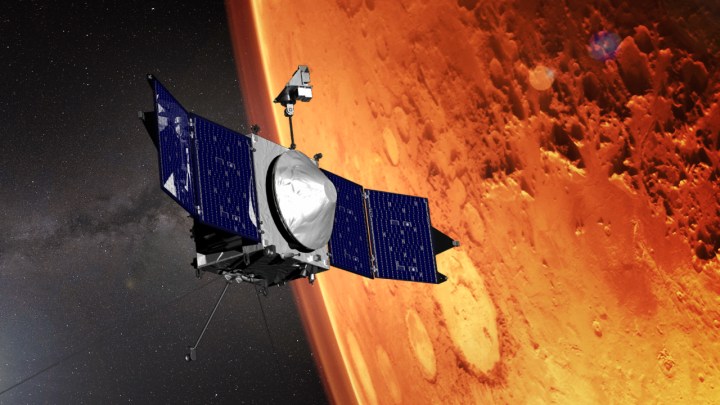NASA’s MAVEN spacecraft, a Mars orbiter that is now almost a decade old, is back up and running following a scare that saw it put into safe mode for several months. The Mars Atmosphere and Volatile EvolutioN craft resumed science operation on May 28, 2022, NASA recently announced, after recovering from the issue.
The problem began in February 2022, when an issue with the spacecraft’s navigation system meant it could no longer determine its orientation. The team lost contact with the spacecraft on February 22, while it was performing routine operations on its Inertial Measurement Units (IMUs). There are two IMUs on board the spacecraft, one primary and one backup. These devices use gyroscopes and accelerometers to measure the movements of the spacecraft as part of the navigation system. Both IMUs stopped working, so while the spacecraft could boot up and operate its other instruments, it could not determine its position in space.

After a reboot and switching to its backup computer, MAVEN did manage to get data from the second IMU. But this IMU was near the end of its lifespan, so the spacecraft had to be put into safe mode, a minimal operating mode, to prevent damage to the IMU or any other systems.
As the backup IMU would only last for so long, the team hurried to finish a navigation alternative they had been working on. This system used the stars to determine the spacecraft’s position without the need for an IMU. In what NASA describes as a “race against time,” the team at Lockheed Martin, the spacecraft manufacturer, had to develop this new mode five months ahead of schedule to get it deployed to MAVEN so the spacecraft could keep working.
When the team uploaded the new software to MAVEN in April they powered off the backup IMU, to save it in case it is needed again in the future. They tested the new system and powered the orbiter’s instruments back up, and once everything was confirmed to be working, the spacecraft resumed full operations.
As well as collecting data on the Mars atmosphere, MAVEN also acts as a communication relay, relaying data between Mars explorers on the surface like the Perseverance rover and Earth. With the resumption of its activities in both capacities, NASA states that it should be able to keep operating into the future, although the team will need to find new ways to control the spacecraft in the few times per year that the IMUs are needed.
“This was a critical challenge facing the mission, but thanks to the work of our spacecraft and operations team, MAVEN will continue producing important science and operating as a relay for the surface assets through the end of the decade,” said Shannon Curry, MAVEN’s principal investigator at the University of California, Berkeley, in a statement. “I couldn’t be prouder of our team.”


